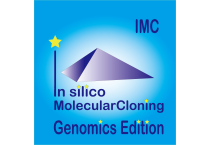Special Notices (update date descending order)
- IMC Version 8.68 released 2023-10-20
- IMC Version 8.45 released 2023-07-18
- Our eShop is currently closed due to its maintenance 2022-12-04
- Our eShop is currently closed due to its maintenance 2022-06-24
- Our eShop is currently closed due to its maintenance 2022-04-17
- Pre-announcement of Version Ups of IMC and GT before End of June 2021-06-14
- Bug Report on the Latest IMC Version 7.52 2021-02-11

